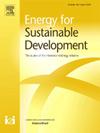Total cost of ownership (TCO) analysis of electric vehicle in ASEAN
IF 4.4
2区 工程技术
Q2 ENERGY & FUELS
引用次数: 0
Abstract
The effects of global warming and subsequent climate change have become major concerns for the environment and societies worldwide. One of the key drivers for these challenges is the increasing demand of energy consumption, which contributes to greenhouse gas emissions (GHGs). Energy sector is the largest main contributor of GHG emissions, with contributed 73 % of total global emissions and transport sector accounting for 16 % of total those emissions. This is largely driven by the increasing number of the vehicles, especially passenger cars and motorcycles, which comprise the majority of the global vehicle fleet. Therefore, many countries are implementing policies to phase out fossil fuel vehicles and promote the adoption of electric vehicles (EVs). However, several key factors that influence the total cost of ownership (TCO) of vehicles should be considered, including energy cost, the manufacturer's suggested retail price, maintenance cost, insurance, tax, and battery replacement cost. This study aims to calculate and compare the TCO of internal combustion engine (ICE) vehicles and EV for both passenger cars and motorcycles in five key countries in ASEAN: namely Indonesia, Malaysia, Thailand, the Philippines, and Viet Nam. The findings found that the comparative TCO of EV and ICE vehicles varies across ASEAN countries due to differences in energy costs, government policies, and market maturity for EVs. Additionally, the EV sample vehicles were selected based on 2023 data, as new EV models continue to penetrate the market year after year. However, the results underscore the importance of government policies and measures in promoting the adoption of EVs, particularly in terms of their environmental benefits and contribution to sustainability.
求助全文
约1分钟内获得全文
求助全文
来源期刊

Energy for Sustainable Development
ENERGY & FUELS-ENERGY & FUELS
CiteScore
8.10
自引率
9.10%
发文量
187
审稿时长
6-12 weeks
期刊介绍:
Published on behalf of the International Energy Initiative, Energy for Sustainable Development is the journal for decision makers, managers, consultants, policy makers, planners and researchers in both government and non-government organizations. It publishes original research and reviews about energy in developing countries, sustainable development, energy resources, technologies, policies and interactions.
 求助内容:
求助内容: 应助结果提醒方式:
应助结果提醒方式:


